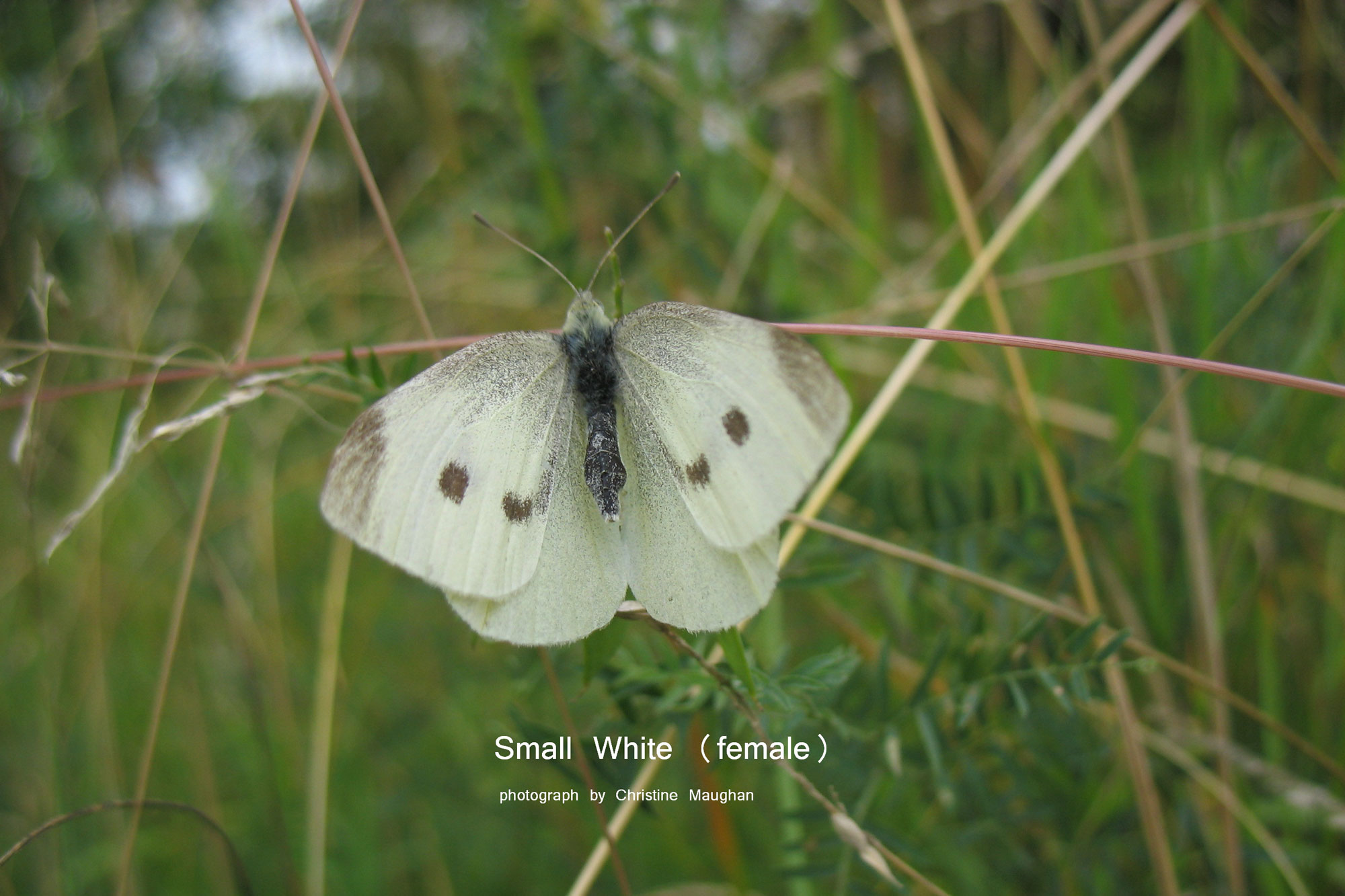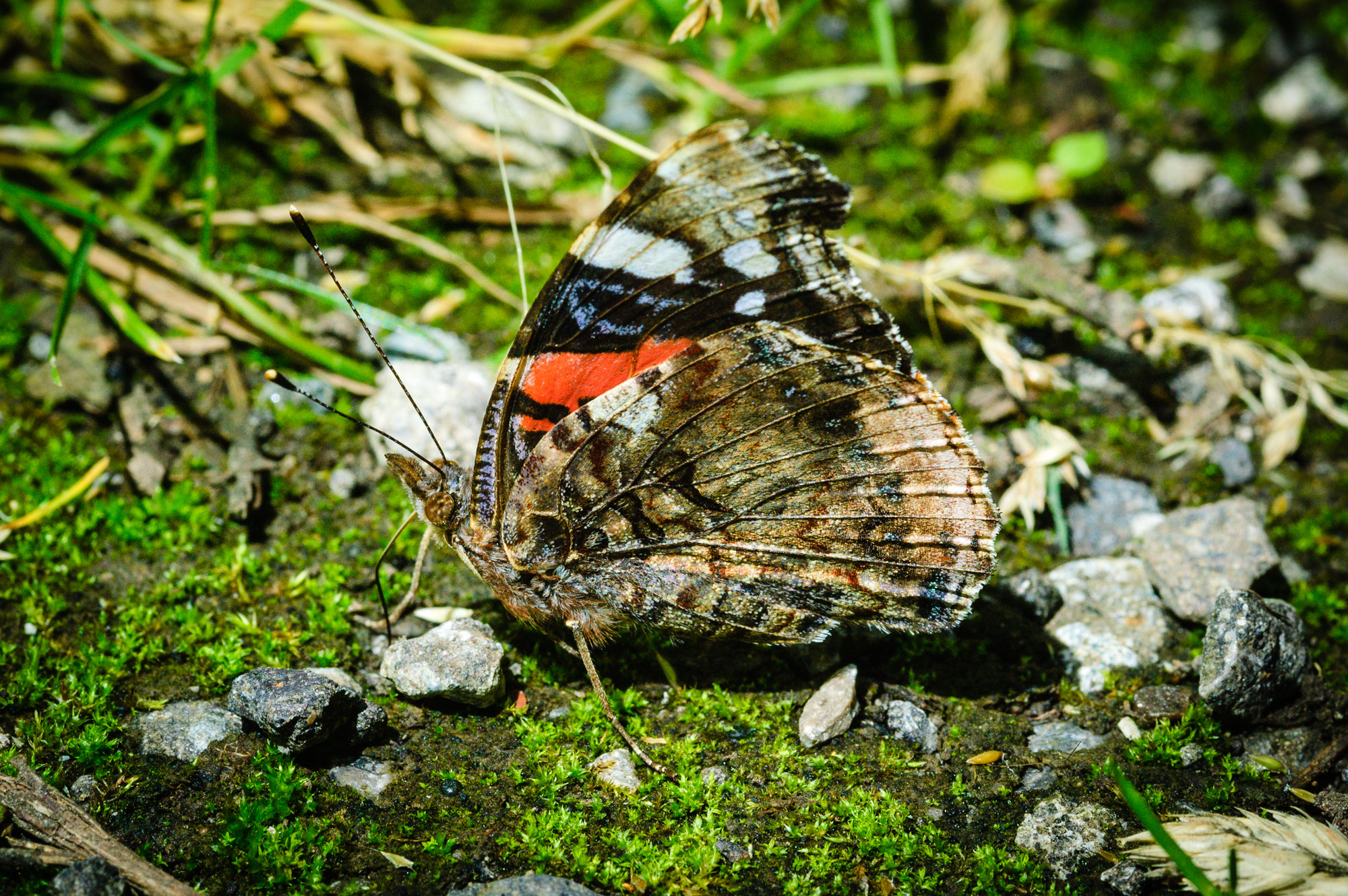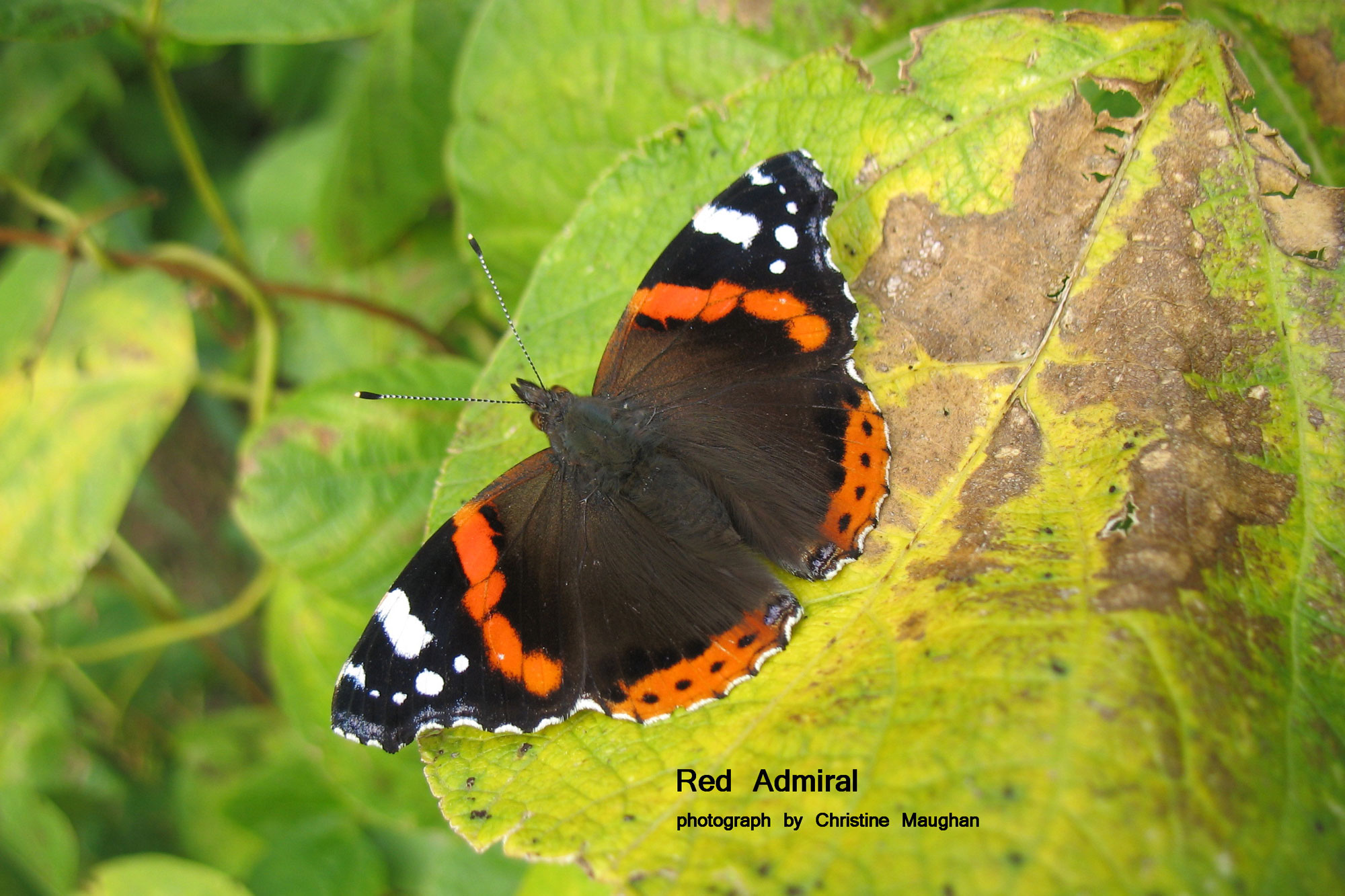
Red Admiral Vanessa atalanta
Habitat
The Red Admiral is a common and widespread species throughout Britain. It is found in almost every habitat and is a familiar visitor to gardens. Actual numbers depend on migration from continental Europe, and North Africa, but it is known to overwinter.
Identification
It is unmistakeable with its black, white and red patterning.
Flight times
It has been recorded during every month of the year, but the first major influx occurs during May and June.
Food plants
Eggs are laid singly on young Nettle leaves.
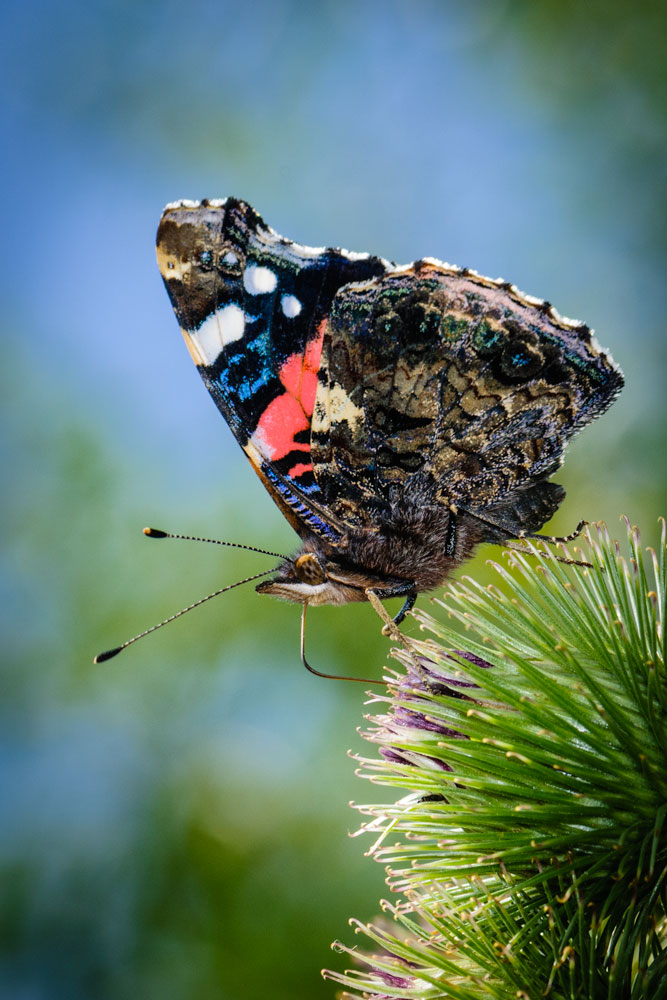
Distribution Maps
2005-2009
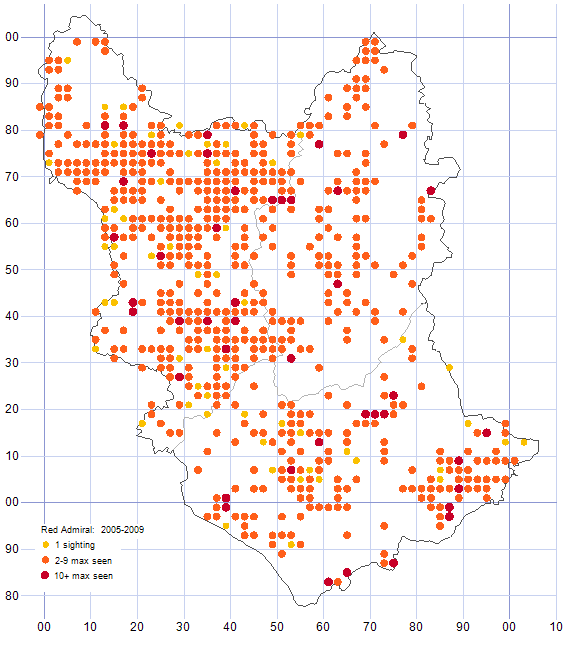
2010-14
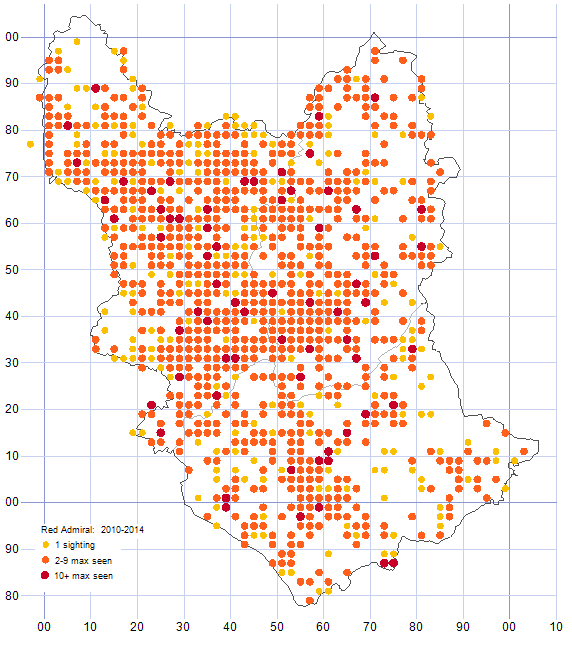
2015-19
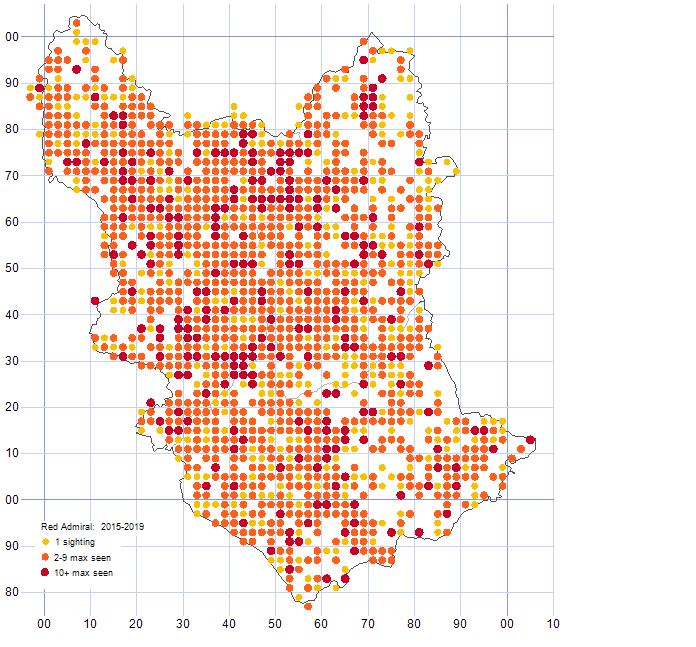
2020-24
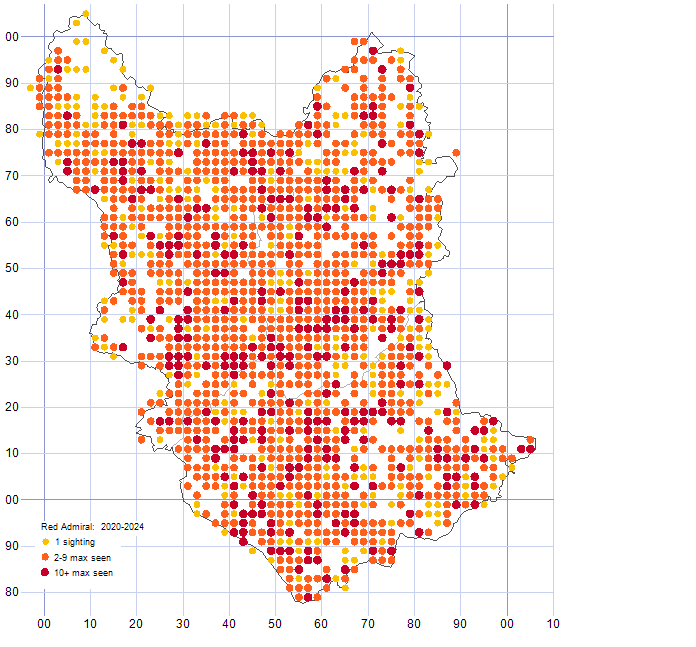
2015
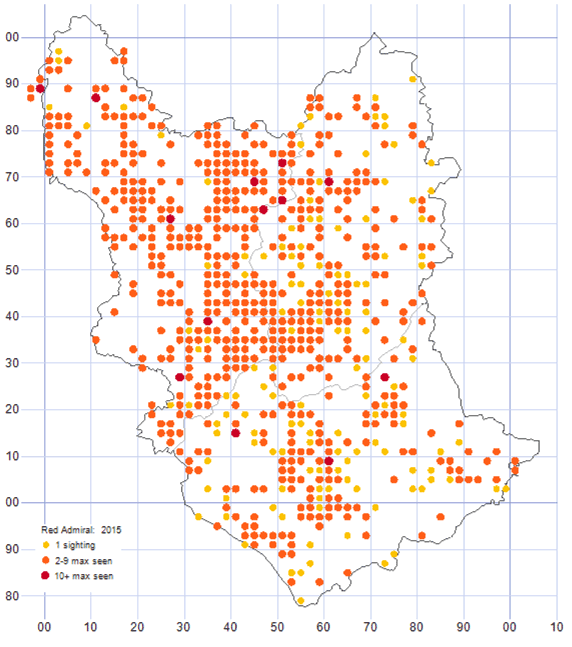
| No of tetrads | 711 |
|---|---|
| First sighting | 09/01/2015 |
| Last sighting | 07/12/2015 |
2016
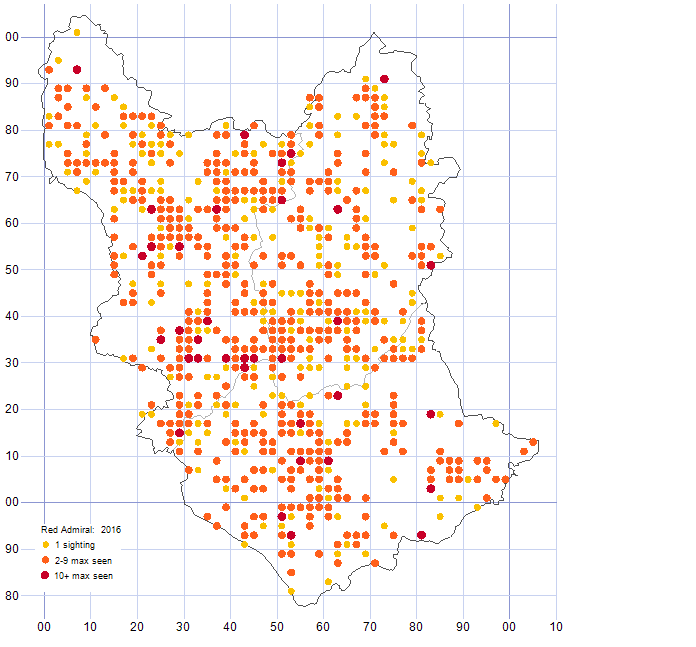
| No of tetrads | 694 |
|---|---|
| First sighting | 29/01/2016 |
| Last sighting | 26/12/2016 |
2017

| No of tetrads | 941 |
|---|---|
| First sighting | 02/01/2017 |
| Last sighting | 22/12/2017 |
2018
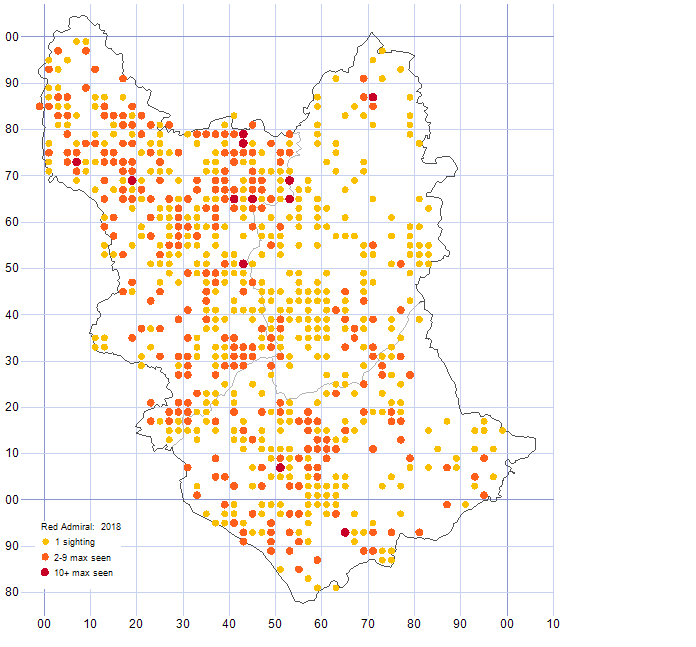
| No of tetrads | 708 |
|---|---|
| First sighting | 04/01/2018 |
| Last sighting | 03/12/2018 |
2019
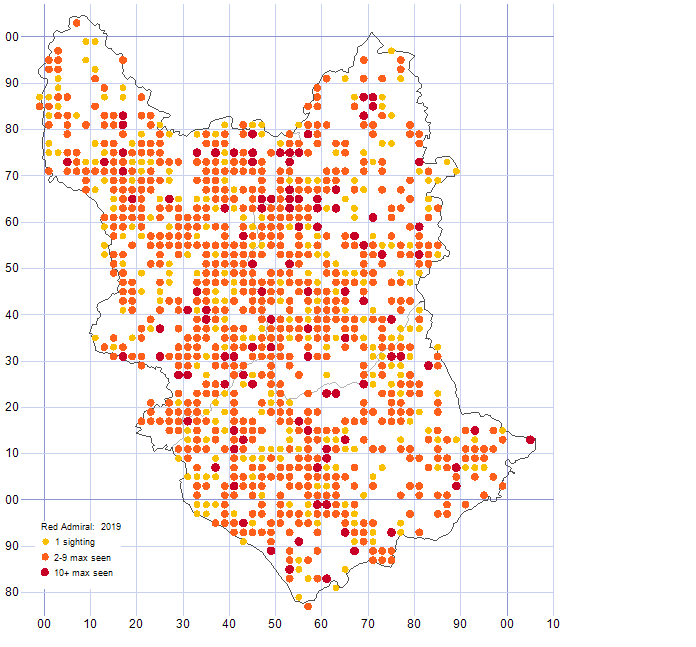
| No of tetrads | 1056 |
|---|---|
| First sighting | 08/01/2019 |
| Last sighting | 03/12/2019 |
2020
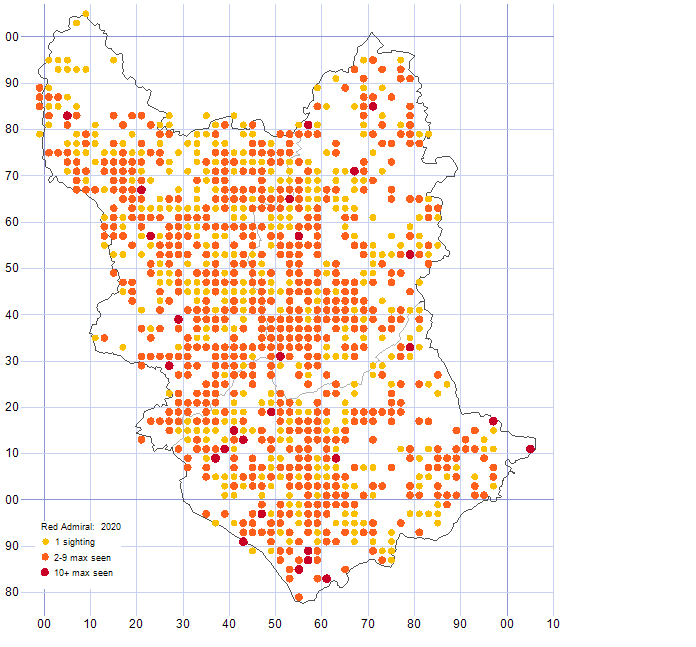
| No of tetrads | 1035 |
|---|---|
| First sighting | 02/01/2020 |
| Last sighting | 31/12/2020 |
2021
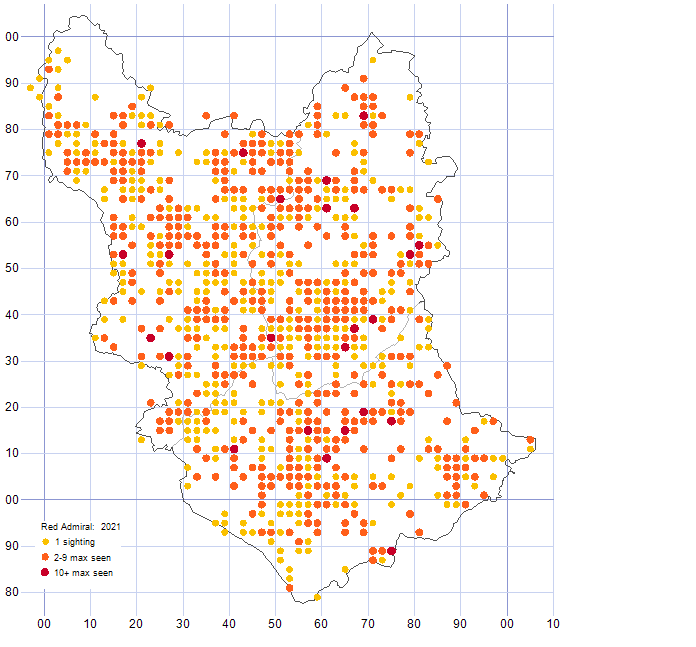
| No of tetrads | 848 |
|---|---|
| First sighting | 20/02/2021 |
| Last sighting | 16/12/2021 |
2022
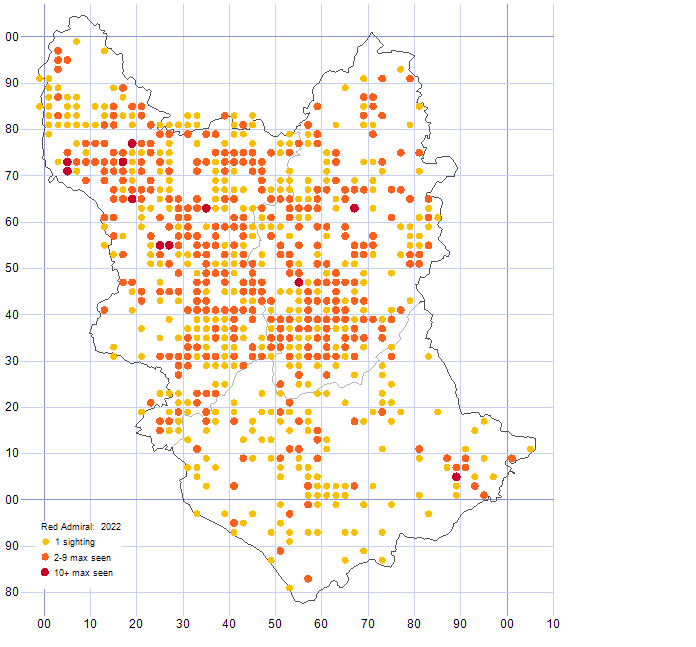
| No of tetrads | 850 |
|---|---|
| First sighting | 01/01/2022 |
| Last sighting | 28/12/2022 |
2023
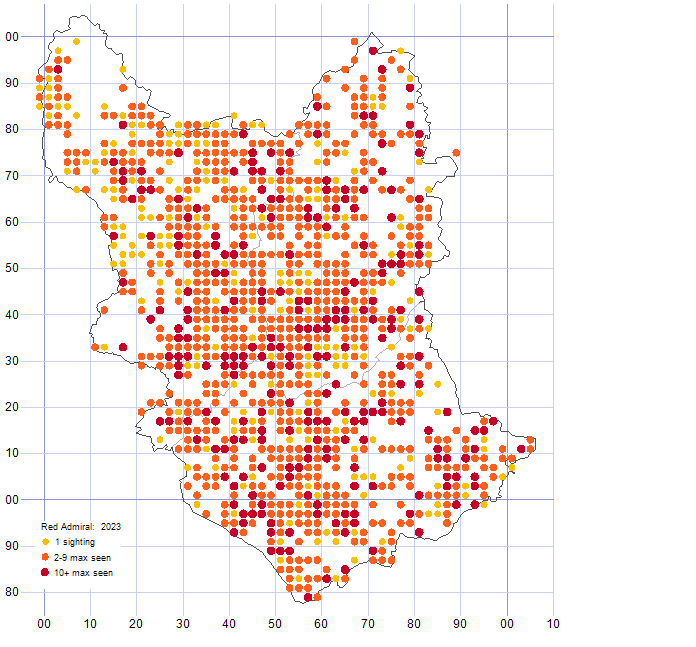
| No of tetrads | 1135 |
|---|---|
| First sighting | 05/02/2023 |
| Last sighting | 24/11/2023 |
2024

| No of tetrads | 906 |
|---|---|
| First sighting | 06/01/2024 |
| Last sighting | 30/12/2024 |
Photo Gallery
Similar or Easily Confused Species and ID Hints
Small White Pieris rapae
Small White are usually smaller and have paler and less extensive wing-tips than the Large White.
Brimstone Gonepteryx rhamni
A female Brimstone flying past could be mistaken for a pale or faded Large White. The black wing-tips of the Large White are the key to look for, plus the female Brimstone has a slight greenish colouration. The Brimstone always rests with its wings closed.
